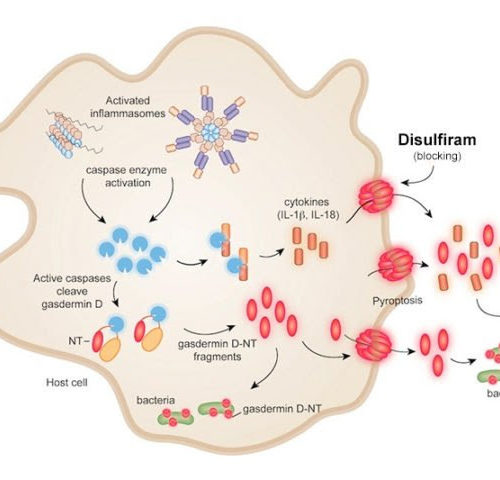by Cell Press While others may be dieting and hitting the gym hard to stay in shape, some people stay slim effortlessly no matter what they eat. In a study publishing May 21 in the journal Cell, researchers use a genetic database of more than 47,000 people in Estonia to identify a gene linked to...
Tag: <span>Biological sciences</span>
Inflammation: Smothering the Fire
Inflammation is the alarm system by which cells first respond to potential danger, but in excess, inflammation can be fatal. In COVID-19, for example, overactive inflammation has led to severe complications and even death for many hospitalized patients. Research in mice led by Harvard Medical School and Boston Children’s Hospital now reveals that the FDA-approved...
Rheumatoid arthritis patients on medicare seeing increased costs for specialty medications
After a sharp drop in out-of-pocket costs between 2010 and 2011, Medicare patients who use specialty biologic medications for rheumatoid arthritis have seen higher out-of-pocket spending for those same drugs because of gradual price increases, a new study in the Journal of the American Medical Association Open finds. Led by Vanderbilt University School of Medicine...
New approach to treating arthritis and other inflammatory diseases
by Peter MacCallum Cancer Centre Researchers from Peter Mac have discovered an innovative way to dampen severe inflammation in mice, uncovering a potential new therapeutic approach for inflammatory and autoimmune conditions such as arthritis, psoriasis and liver disease, as well as some cancers. The research, co-led by Prof Mark Dawson’s laboratory, in collaboration with scientists...
Ultra-precision nano-sensor could detect iron disorders
Chronic iron imbalances – having either too little or too much iron in the blood – can result in medical conditions ranging from anaemia and haemochromatosis through to more severe diseases, such as cancer, Parkinson’s Disease and Alzheimer’s Disease. Haemochromatosis is one of Australia’s most common hereditary diseases and the Australian Bureau of Statistics estimates...
Live zoster vaccine safe and effective for people taking TNF inhibitors
AMERICAN COLLEGE OF RHEUMATOLOGY ATLANTA — According to new research findings presented this week at the 2019 ACR/ARP Annual Meeting, the live zoster virus vaccine is safe for people who are currently receiving tumor necrosis factor inhibitor (TNFi) biologic therapies for various indications (Abstract # 824). In healthy individuals, excess TNF in the blood is...
Salt helps proteins move on down the road
With a lot of hard work and a dash of salt, Rice University scientists have taken a step toward simplifying drug manufacture. Rice chemist Christy Landes and her colleagues reported in the Proceedings of the National Academy of Sciences their strategy to make polymer membrane-based separation of proteins more efficient. “It costs about $3 billion...
How time affects the fate of stem cells
ECOLE POLYTECHNIQUE FÉDÉRALE DE LAUSANNE How do temporal variations in protein concentrations affect biology? It’s a question that biologists have only recently begun to address, and the findings are increasingly showing that random temporal changes in the amount of certain proteins play a direct and significant role on biological processes. In a new study published...
Lyme disease: Why does joint pain persist?
Researchers have found clues that might lead to a treatment for Lyme arthritis. The secret may lie in the walls of the bacterium that causes the condition. Lyme disease occurs when a person becomes infected with a tick-borne bacterium called Borrelia burgdorferi. Initial symptoms typically include general fatigue, fever, skin rashes, and headaches. Although doctors can often treat Lyme disease with antibiotics, if they do...
Revolutionary therapy that blasts 80°C radiofrequency into defective lung nerves could help thousands of sufferers with severe asthma
Nuvaira is a treatment that involves inserting a thin tube into the airways A deflated balloon at the end of the tube is inflated once it is in the right position Tiny electrodes on the surface emit radio frequency where the faulty nerves are The temperatures reach 80 Celsius destroying nerves just beneath the surface Research suggests the hour-long treatment works...



